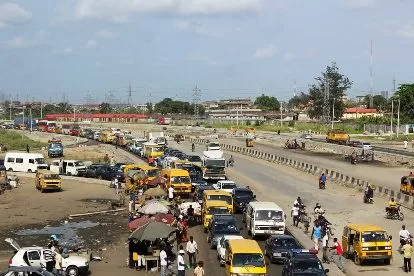Have you been in a state of confusion about the rising cost of living in your location? Indeed, that place you live could be one of the most expensive states in Nigeria.
But Tinubu’s government is giving you an information that can help you pick a less expensive state to consider.
Although, your kind of job and source of income may play huge roles, in leading your thoughts to a logical end.

You see, the Nigeria Bureau of Statistics (NBS) is an institution under the government of Tinubu.
Now, it has revealed that Kogi, Lagos, and Rivers are the most expensive states to live in, based on inflation rates for August 2023.
What is in Kogi? someone may be tempted to ask.
But in its latest Consumer Price Index data released on Friday, the NBS said on a year-on-year basis, Kogi led the way with the highest all-items inflation rate at 31.50%.
Kogi is a transit state, and one of those prone to flooding, when the ‘waters’ are vexing.
The state was followed closely by Lagos at 29.17% and Rivers at 29.06 per cent.
In contrast, Sokoto recorded 20.91%, Borno 21.77%, and Nasarawa 22.25%, recorded the slowest rise in headline inflation on a year-on-year basis.
Again, someone will say those are far north and not a place for me.
But when examined on a month-on-month basis, the trend continued, with August 2023 seeing the highest increases in Kwara at 6.07%, Osun at 4.36%, and Kogi at 4.35%.
Food Inflation
While Sokoto recorded 1.38% and Borno 1.73%, Ogun at 1.89% had the slowest rise in month-on-month inflation. Oh yes! someone in Lagos may just be thinking the train could help.
Specifically for food inflation, the figures for August 2023 showed a similar pattern, with Kogi again taking the lead with the highest year-on-year basis food inflation rate at 38.84%.
Have You Seen 10 African Countries With Highest Inflation Rate
Lagos followed closely at 36.04%, and Kwara at 35.33%.
On the other hand, Sokoto 20.09%, Nasarawa 24.35%, and Jigawa 24.53% recorded the slowest rise in food inflation on a year-on-year basis.
On a month-on-month basis for the same period, Rivers at 7.12%, Kwara at 5.89%, and Kogi at 5.80% recorded the highest increases.
Sokoto recorded 0.50%, Abuja at 1.30%, and Niger at 1.40% experienced the slowest rise in food inflation.

